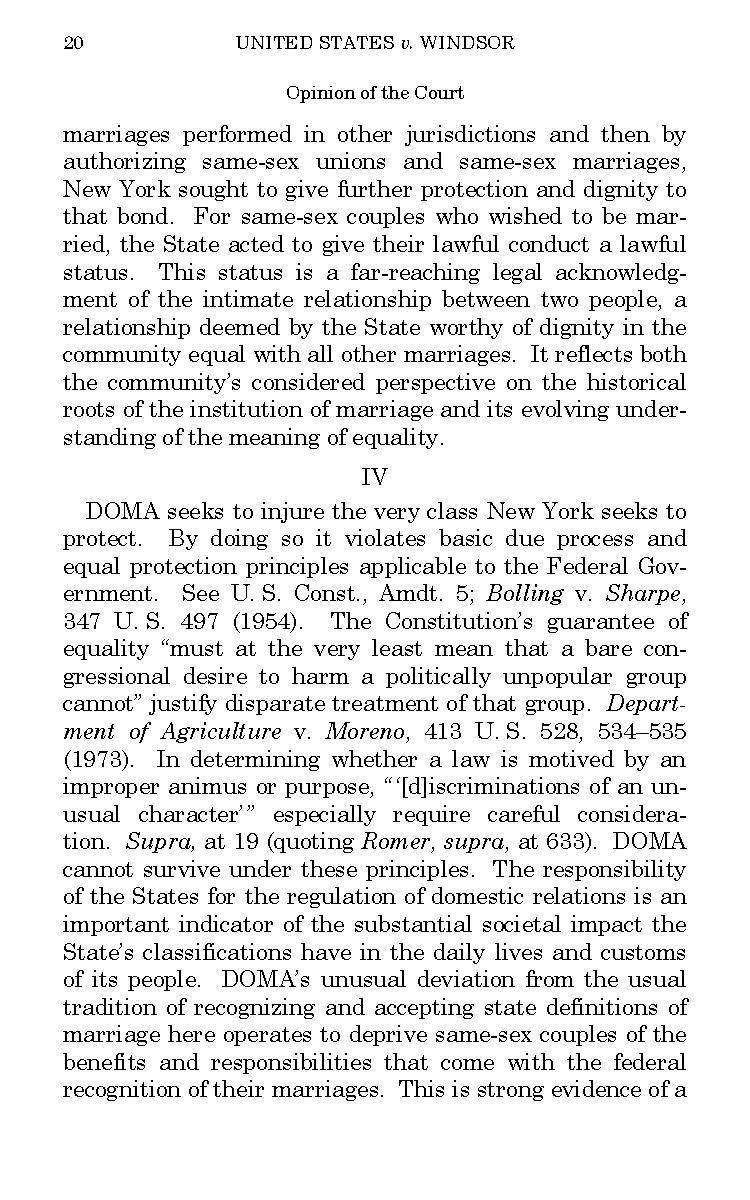marriages performed in other jurisdictions and then by authorizing same-sex unions and same-sex marriages, New York sought to give further protection and dignity to that bond. For same-sex couples who wished to be married, the State acted to give their lawful conduct a lawful status. This status is a far-reaching legal acknowledgment of the intimate relationship between two people, a relationship deemed by the State worthy of dignity in the community equal with all other marriages. It reflects both the community's considered perspective on the historical roots of the institution of marriage and its evolving understanding of the meaning of equality.
IV
DOMA seeks to injure the very class New York seeks to protect. By doing so it violates basic due process and equal protection principles applicable to the Federal Government. See U.S. Const., Amdt. 5; Bolling v. Sharpe, 347 U.S. 497 (1954). The Constitution’s guarantee of equality "must at the very least mean that a bare congressional desire to harm a politically unpopular group cannot" justify disparate treatment of that group. Department of Agriculture v. Moreno, 413 U.S. 528, 534–535 (1973). In determining whether a law is motived by an improper animus or purpose, "'[d]iscriminations of an unusual character'" especially require careful consideration. Supra, at 19 (quoting Romer, supra, at 633). DOMA cannot survive under these principles. The responsibility of the States for the regulation of domestic relations is an important indicator of the substantial societal impact the State's classifications have in the daily lives and customs of its people. DOMA's unusual deviation from the usual tradition of recognizing and accepting state definitions of marriage here operates to deprive same-sex couples of the benefits and responsibilities that come with the federal recognition of their marriages. This is strong evidence of a
